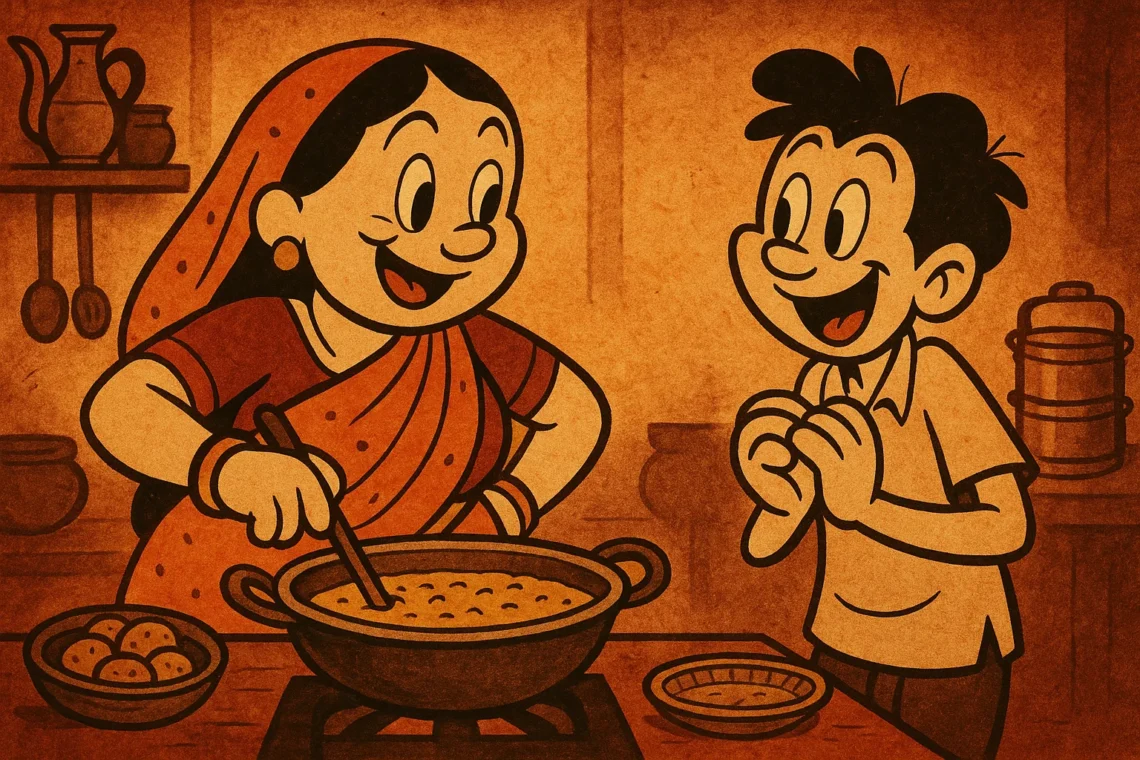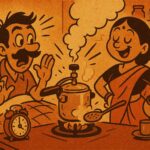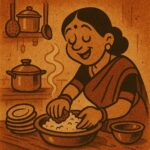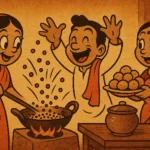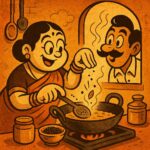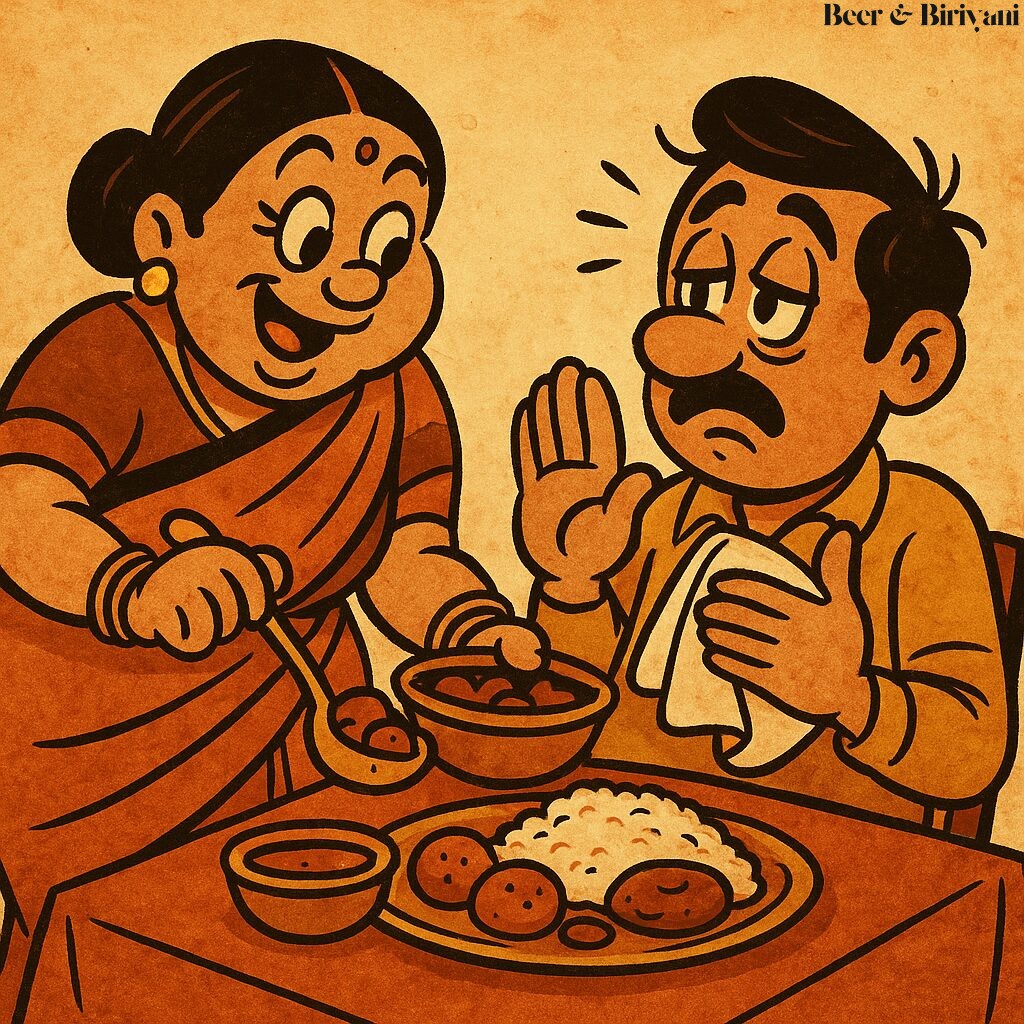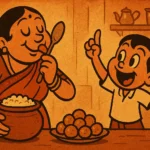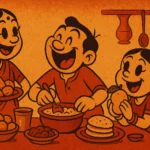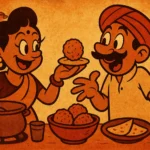Grief is a strange creature. It doesn’t always show up at funerals or during solemn silences. Sometimes, it arrives in the sizzle of mustard seeds in oil. In the steam rising from a pressure cooker. In the rhythmic clink of a steel ladle scraping the bottom of a pot of dal. That’s when it really hits you — not in the epic, cinematic moments, but in the ordinary acts someone did every day, so often that you never thought you’d miss them. Until you do.
My grandmother didn’t teach me to cook. Not formally, anyway. She didn’t believe in recipes or measuring spoons. “Just watch,” she’d say, which sounded simple but was actually a test of lifelong apprenticeship. She stirred her dal with a slow, even hand — never in a hurry, never distracted. It was a movement she had repeated tens of thousands of times, each circle in the pot a kind of silent offering.
Stirring as Memory
The way she stirred — that’s what I remember most. Clockwise, then anti-clockwise, as if to remind the universe that all things come back around. She never banged the ladle on the side of the vessel like I do. Her touch was gentle, respectful, almost sacred. As if the dal had feelings.
I didn’t notice it then, of course. I was too busy avoiding helping her, pretending to study, or sneaking extra papad from the tin. But after she passed, I found myself in the kitchen, trying to make toor dal the way she used to. And I realized I wasn’t looking for taste — I was looking for her. I stirred and stirred, but something was missing. Not the cumin. Not the turmeric. Something softer. Something human.
The Things We Inherit
We talk a lot about family heirlooms — jewelry, property, faded photographs. But no one talks about inherited motions. The way someone folds a bedsheet. The way they tie their hair. The way they stir dal. These are the quiet inheritances, the ones that don’t get passed down so much as absorbed.
One evening, a few years after she was gone, I visited my cousin’s house. Her mom had made dal and served it in a steel katori that looked suspiciously familiar. I took a bite. It wasn’t exactly the same — maybe a bit more hing, a little less salt — but suddenly I could see her again. Not clearly, not like a photograph, but like a feeling. Her cotton sari rustling in the kitchen. Her lips pursed in concentration. Her bangles making music as she stirred.
Dal as a Love Language
It took me years to realize that for many women in our families, food was the only language they were allowed to be fluent in. My grandmother wasn’t the storytelling type. She didn’t write letters or give pep talks. But if she made you dal when you came home sick from school, that was love. If she remembered you liked your tadka with extra garlic, that was a love note.
And now, when I cook dal for someone, I find myself stirring a little slower. Maybe adding that second pinch of jaggery like she used to. I don’t tell them why. I just hope they feel it.
What Stays
She’s been gone a long time now. We’ve had new kitchens, new diets, new gadgets. I’ve eaten fancy lentil soups in Austin restaurants that cost more than her weekly grocery bill. But nothing has ever matched that bowl of dal she used to make on rainy evenings, served with hot rice and the kind of silence only comfort allows.
Sometimes, when I stir the pot now, I hear her bangles again. Not clearly. Just a whisper. But it’s enough. It’s enough to bring her back, if only for a moment.
And in that moment, I remember everything. Not because of photos, or stories, or anniversaries. But because of the way she stirred dal.
Born in Mumbai, now stir-frying feelings in Texas. Writes about food, memory, and the messy magic in between — mostly to stay hungry, sometimes just to stay sane.

